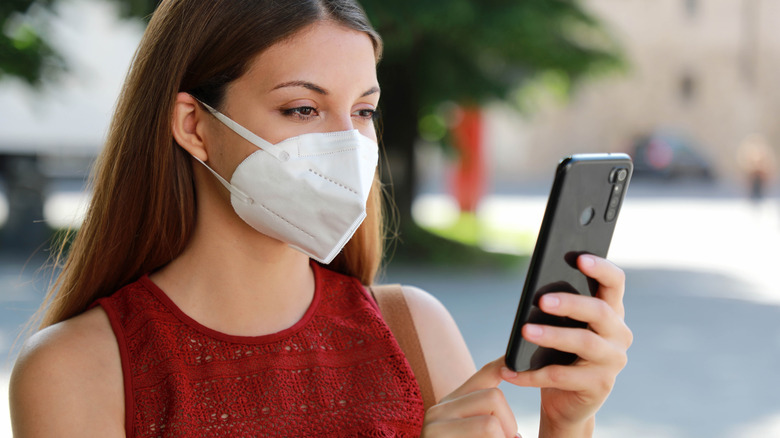What You Need To Know About VAERS
Over the past year or so, we've all had to get used to unfamiliar medical parlance — from the precise definition of the word "pandemic" to why the novel coronavirus is named COVID-19. You may have heard of VAERS, too. If not, that's okay. We're going to explain it to you so you're up on the latest lingo, and won't miss a conversational beat when you're finally back to dinner parties.
The acronym VAERS stands for Vaccine Event Reporting System. VAERS was founded in 1990 and is co-managed by the Centers for Disease Control and Prevention (CDC) and the Food and Drug Administration (FDA). The VAERS website describes itself as a "national early warning system to detect possible safety problems in U.S.-licensed vaccines."
Although established decades ago, VAERS has suddenly emerged into the collective consciousness because of the COVID-19 vaccines and the questions surrounding their efficacy and safety. So, what exactly does VAERS do and what do you need to know about it? Let's take a look.
The purpose of VAERS
The primary function of VAERS is to collect reports of "adverse events," or side effects, after a person has received a vaccination. The website accepts reports from everyone, including patients and anyone related to a patient, while healthcare professionals and vaccine manufacturers are required to report all adverse events they're made aware of.
To report a side effect that is believed to be linked to a vaccine, you don't need to have a doctor's confirmation or any proof there's a connection between the two. The VAERS site is very clear in encouraging people to report clinically important adverse events that occur after an adult or child receives a vaccine, even if you're not sure the vaccine caused the adverse event.
You will need to provide some information to submit a report, including your age and sex, plus the brand and dosage of the vaccine received and details about your symptoms, including when they began. No identifying information of the person who received the vaccine or the person who filed the report is visible to the public.
You'll receive a confirmation number electronically or a VAERS identification number by mail as confirmation your report was received. VAERS may also contact you or your healthcare provider for more information, such as medical records, after you submit your report.
VAERS isn't without limitations
As no clinical proof is required to show a causal relationship between the adverse event and the vaccine, there will be a lot of side effects reported that have nothing to do with the vaccine. "VAERS is meant to pick up lots of signals, most of which are going to be noise," Amesh A. Adalja, infectious disease expert and senior scholar at the Johns Hopkins Center for Health Security, told Health. "Not everything that happens after a vaccine is caused by the vaccine."
VAERS by itself is not designed to determine if a vaccine causes a specific health problem. Overall, a causal relationship cannot be established using information from a VAERS report alone, per the website. This may lead to confusion, and possibly alarm, as there are reports of deaths in VAERS data. However, the CDC says that "a review of available clinical information, including death certificates, autopsy, and medical records has not established a causal link to COVID-19 vaccines" (via Reuters).
While some reports to VAERS represent true vaccine reactions, others will turn out to include "incomplete, inaccurate, coincidental and unverified information," per VAERS' disclaimer.
VAERS is a helpful system
VAERS is useful, however, in many ways to both the government and the public. It collects data from all U.S. states and territories and is able to "detect new, unusual, or rare vaccine adverse events; monitor increases in known adverse events; identify potential patient risk factors for particular types of adverse events; assess the safety of newly licensed vaccines; determine and address possible reporting clusters (e.g., suspected localized [temporally or geographically] or product-/batch-/lot-specific adverse event reporting); recognize persistent safe-use problems and administration errors; [and] provide a national safety monitoring system that extends to the entire general population," according to the VAERS website.
VAERS provides the CDC and FDA with valuable information that suggests additional work and evaluation might be necessary to assess a possible safety issue. If a safety signal is found in VAERS, the CDC's Vaccine Safety Datalink or the Clinical Immunization Safety Assessment project will conduct further studies to explore the connection between an adverse event and a vaccine.
Perhaps most importantly, VAERS data is available to the public. Anyone can access reports to determine if their side effect has been experienced by others. VAERS data that has been cleared of identifying information is available four to six weeks after a report is submitted. As new data is always being added, the results are subject to change.




